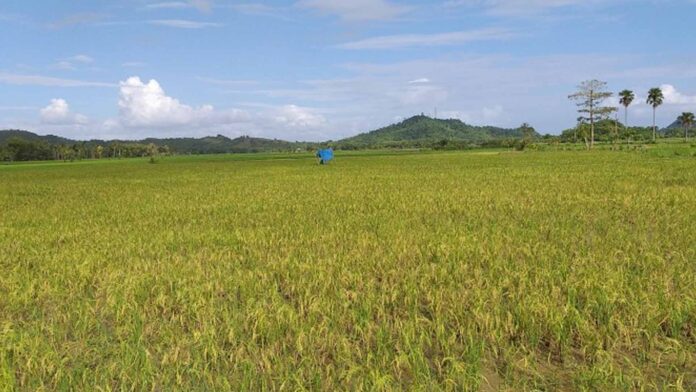Agriculture Secretary William Dar has said achieving 100 percent rice self-sufficiency in Eastern Visayas in 2022 is very attainable.
Speaking to reporters after an event here Tuesday afternoon, Dar said the region is already 96 percent sufficient this year, based on data from the Philippine Statistics Authority (PSA).
“It’s very achievable since Region 8 only needs 4 percent to become self-sufficient. Leyte can handle that with intensified rice program in the province,” Dar added.
Annually, Leyte province contributes 80 percent to the region’s overall rice requirement.
One of the major contributors to regional sufficiency is the planting of a hybrid rice variety in the region. The target is to cultivate the high-yielding variety in 21,000 hectares in the next cropping season that starts in November.
Based on observations, hybrid rice yields as much as 12 tons per hectare or more than three times higher than the 3.8 tons per hectare yield for certified in-bred rice seeds.
Meanwhile, rice production in Eastern Visayas has increased by 6.7 percent in the first three months of 2021 compared to the same period in 2020 largely due to the expansion of areas devoted to the production of staple food.
From January to March 2021, the output of palay (unhusked rice) rose to 269,853 metric tons (MT) from 252,869 MT in the first quarter of 2020.
This is attributed to a significant 10.5 percent expansion in the total area harvested for rice from 75,600 hectares in late 2020 to 83,522 hectares in early 2021, according to the PSA.
The PSA report also pointed out that the hefty production hike was due to the increase of output in Northern Samar by 73.5 percent during the first three months when its rice farms yielded 40,228 MT of palay.
The province contributed 14.9 percent to the regional harvest.
Leyte province contributed the biggest share in rice yield in Eastern Visayas at 139,207 MT during the period, comprising more than half or 51.6 percent of the total palay production in the region.
Samar came next with 52,865 MT production, accounting for 19.6 percent of the region’s total.
Eastern Samar and Southern Leyte registered 7.2 percent (19,377 MT) and 4.7 percent (12,600 MT) shares, respectively.
Biliran had the least contribution at 2.1 percent (5,576 MT) of the region’s total.
Eastern Visayas is an agricultural area with 45 percent or 976,415 ha of its total land area devoted to agriculture, according to DA.
Of its agricultural lands, 70 percent is devoted to coconut plantation and 20 percent is planted with rice and corn.
The remaining land is planted with other crops, used to raise livestock and poultry, or produce inland fishery products. (PNA)






